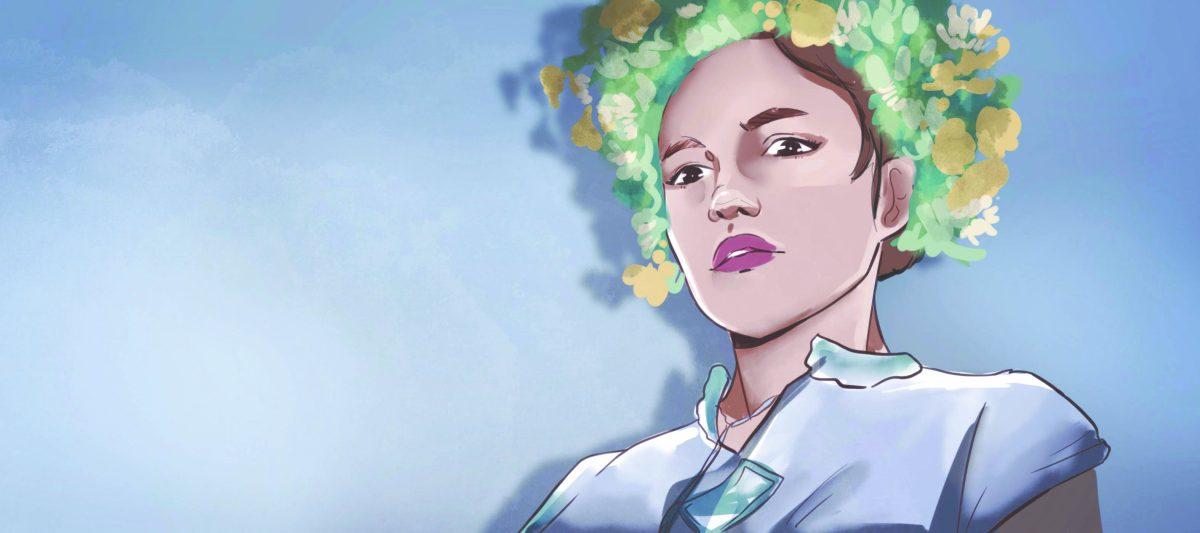“Midsommar” begins in the dead of winter. For those familiar with writer/director Ari Aster’s previous work on “Hereditary,” this irony shouldn’t come as much of a surprise. As with his other critically-acclaimed film, Aster continues to redefine the horror genre, crafting the story of “Midsommar” with a startling intricacy, weaving double-meanings and subtle messages into every scene and sentence of dialogue. The tone, characters and plot work together to provide a tense, dreadfully under-your-skin film that haunts you long after you leave the theatre.
The majority of the movie takes place deep in the Swedish countryside. The main character, Dani, travels with her boyfriend, Christian, and his fellow anthropology students to study a commune of Swedish natives during their midsummer festival. It rapidly becomes apparent, however, that behind the whimsical exterior of flowers and cotton tunics is a dark and twisted society.
The first element that “Midsommar” does correctly is tone. Absent are the jump scares of your average “Conjuring” movie or the gratuitous torture porn of “Saw.” Instead, the audience is witness to a steady deterioration of humanity, thinly veiled under the guise of a flowery paradise. The heavy subject matter — grief, violence and death — contrasts sharply with the bright, seemingly carefree setting.
Almost immediately after the movie begins, the audience is given a heart-wrenching introduction to the main character, Dani, along with her boyfriend, Christian, and Christian’s group of college friends. Dani calls Christian about a disturbingly suicidal message she received from her sister. Christian reassures her that everything’s fine, and, after hanging up, is encouraged by his friends to break up with her because she’s becoming too clingy. When Christian answers the phone again in a few minutes, he’s greeted by Dani sobbing uncontrollably. The movie cuts to an agonizingly slow shot of Dani’s parents’ home, showing that Dani’s sister asphyxiated both herself and her parents by filling the entire house with car exhaust. The opening credits play over Dani’s screams of grief.
Although this opening sequence barely lasts 15 minutes, it cuts deep into one of the worst fears a person can have: not ghosts or zombies, but the suicide of a loved one. Combined with the characteristic Ari Aster filming style — long shots of characters’ faces and wide angled views of the scenes — the viewer feels vulnerable, up close and personal with the characters and anticipating horrors in the background or on the edge of the screen. The fear feels real.
This leads to the second aspect of “Midsommar” that is done flawlessly: the characters. Everyone, Dani in particular, is relatable as people. Unlike many other horror films — in which audience members are often left urging characters not to make stupid decisions — the characters’ reactions to events in the movie are reasonable, and consistent with who they are.
Take, for example, the Ättestupa scene: a ritualistic senicide that is actually believed to have taken place in ancient Nordic culture. In “Midsommar,” Dani, Christian, and Christian’s college friends stand and watch as two elderly people in the rural Swedish community throw themselves off a cliff to their death. Dani, as well as a few other people in the group, react immediately to the vileness of the act, with Dani having flashbacks to her own sister’s suicide. Christian, though, only pretends to be outraged for Dani’s sake, while privately indicating his own indifference towards the ritual. This is just a brief glimpse into Christian’s moral shallowness, which ultimately ends up being his demise later in the movie.
In addition to the dark tone and complex characters, “Midsommar”’s plot is as engaging as it is frightening. By becoming so invested in the character of Dani — someone who has suffered loss, and struggles to find meaningful relationship — the audience can’t help but hang on every scene, hoping that Dani will come to terms with her grief and find true relationship. In the ultimate twist — which you’ll have to watch the movie to find out — she accomplishes both of those things, but in a way the audience member never expects.
Overall, “Midsommar” — like many of the best horror movies — is not only terrifying in its own right, but attempts to communicate a deeper message. As humans, we crave relationship: “Midsommar” is a movie about what happens when that craving sours and grows out of control.







